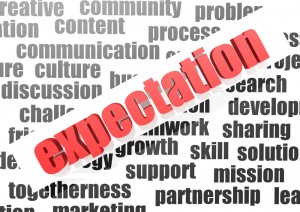

Leadership to me is leading people, influencing people, commanding people, guiding people. The different ways of leading are by position, personality, charisma, moral example, power held etc… An intellectual leader should always be able to accomplish things swiftly and smoothly. Leaders focus on people, do the right things, inspire, motivate people and build sharp entities. But being a leader is not all about motivating and inspiring, but leaders also have to make some very crucial decisions and face a wide range of problems on the job.
One writer describes the problem facing leaders as “Meeting new demands with insufficient resources”. The staff is overworked and yet talent, ideas and expertise are often under-utilized as we struggle to meet the day to day demands.
Great leaders understand that they can only deliver great performance through others. They depend on others – especially middle managers – and invest time in stretching and challenging those managers. There are two types of leader:
- Those who kill ideas, suck all the energy out of a team and lead hard working, driven and compliant teams. They want to be in control, to have the credit and ensure no one else has a voice.
- Then there is second type, the Multipliers: Multipliers are brilliant at doing more with less. They cultivate ideas, they find ways of doing things more effectively, they give people responsibility and credit, and they energize their teams.
Samsung faced an enormous challenge in the 1990’s – they were way behind their international rivals like Sony. They wanted to develop an international company but had a 100% Korean workforce with very limited understanding of the global market and cultures. They invested in a cadre of middle managers – sending them all over the world to better understand how to shape and engage with the potential markets. It was a phenomenal success. By changing the middle managers mind-set and understanding they built a dramatically different future.
Middle managers take a leader’s vision, focus, and change and interpret it. Senior managers will have a long time scale, they see the bigger picture, and have a broad understanding of the consequences of their decisions. Middle managers work to shorter times scales – they look a week or month ahead and ask – “How does this new initiative work alongside my operational priorities? How do I make best use of my resources? What pace can I go at given the other requirements of my team? They set direction – if they are good at their job they will ensure their team members clearly know what is expected of them.
A leader sets the direction, devises strategies and creates a vision for the team to follow. Leader gets employees on board for planning, communicates well with team members and provides a rich network. Empowering and cheering also adds value to leader. Gives sense of accomplishment, inspires and measures the performance of subordinates. Verbal facility, honesty, initiative, aggressive, self-confidence, ambitious, originality, adaptability are some of the traits of leadership. Leadership styles are delegating things to juniors, responsible, selling, and telling about relationship, provide instruction and supervise, facilitate decisions. New leaders take note of challenges, establish relationships and enhance personal equilibrium. Balance intense focus on priorities with flexibility on implementation, build personal credibility and momentum, earn right to transform entity and transition.
The higher one rises in an organization, the greater are the responsibilities. Therefore managers learn to delegate and in doing so free themselves to be more strategic and in the process develop the talents of others and grow the capacity of the organization to meet rising the challenges. That’s what’s called leadership.

